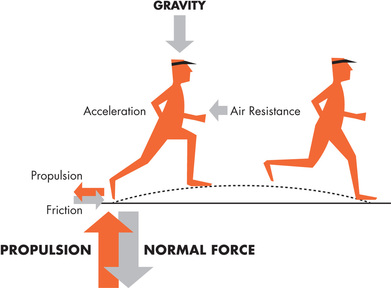In light of the winter storm hitting Colgate and the recent release of Frozen 2, I decided to provide you with some tips on how to build the perfect snowman by using physics.
Tip #1: The snowball must be firm.
To achieve this, you need to pack the snow well by exerting a fair amount of pressure on the snow on your hands. Because pressure is equal to force over area, the more force you apply, the more pressure is exerted. Additionally, because pressure is directly proportional to force (P = F/A), one way to increase the pressure is to increase the force applied. This can be done by increasing the weight applied by having more people put their weight on the snowball. Moral of the story - make sure to make your snowmen with friends, the more the merrier!
Tip #2: Don’t stray from the traditional sphere shape.
The sphere is the best shape for a snowman. This is because as the snowballs are packed into a sphere, the snow exerts pressure on the ice crystals so that some crystals melt while the ball is being formed. This way, the melted ice can then recrystallize in the cold temperature and bind the snowball together. Also, because spheres have a small surface area to volume ratio, they’ll melt slower than other shapes when exposed to the sunlight.
Tip #3: Avoid making the snowballs too big!
This is because as the size of the sphere snowball grows, so too does it’s total surface area. Therefore, because pressure is inversely proportional to area, an increase in area with a constant applied force is associated with a decrease in pressure. Since pressure is directly proportional to force, more force is needed to apply the same amount of pressure to a larger snowball as the smaller snowball. Thus, it becomes increasingly difficult to apply enough pressure to pack larger snowballs - it requires more force to achieve the same pressure.
Tip #4: Don’t stack too high!
The height of your snowman is really important. This is because as you increase the height of the snowman, the center of mass becomes higher above the ground. The lower the center of mass is to the ground, the better and more stable the snowman is.
 Tip #5: Stick with the standard snowman structure!
Tip #5: Stick with the standard snowman structure!
 The standard structure of 3 snowballs - a large base, a medium middle, and a small head - is the best design. The base snowball needs to be the largest to be able support the downward force of the above snowballs without collapsing (by applying an equal and opposite upward force, according to Newton’s Third Law) so that they remain at rest.
The standard structure of 3 snowballs - a large base, a medium middle, and a small head - is the best design. The base snowball needs to be the largest to be able support the downward force of the above snowballs without collapsing (by applying an equal and opposite upward force, according to Newton’s Third Law) so that they remain at rest.
Downward force of medium and small snowballs = (m-medium + m-small) * g
Upward force of large snowball = m-large * g
m-large * g = (m-medium + m-small) * g
An inverted snowman (small base, medium middle, and large head) would not be ideal since the force of the combined upper snowballs would likely be too great for the small bottom snowball. This is because force is directly proportional to mass - the mass of the combined snowballs would be much greater than the mass of the bottom snowball. So, although the inverted design is possible, it isn’t sustainable.
m-small < (m-large + m-medium)
m-small * g < (m-large + m-medium) * g
Tip #6: Where you build your snowman also matters.
Make sure to build your snowman on level ground. This is because on flat ground, the upward normal force of the ground on the bottom snowball and the force of gravity on the bottom snowball both only have y-components that directly cancel each other out. Therefore, the snowman is likely to remain at rest and not topple over, according to Newton’s First and Third Laws.
If you build your snowman on the side of a hill, the force of gravity on the bottom snowball now has an x- and a y-component. This means that the force in the x-direction is not equal and opposite the normal force of the ground acting in the y-direction. So, there is a net force that could cause the snowman to slide or fall over.
Take Elsa and Anna’s word for it - they know what they’re doing!
So, make sure to keep these tips in mind if you decide to spend your snow day outside building snowmen!
References:






